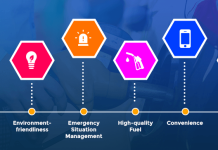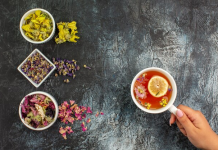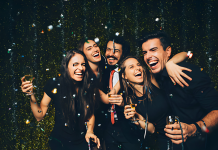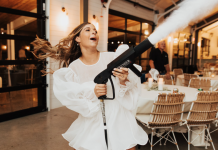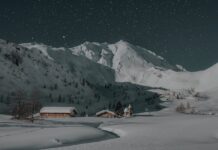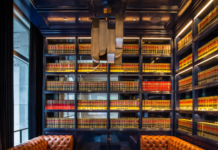It Does Not Always Have To Be A Studio
You don’t need a stylish kitchen for cool food pictures. It is enough if you set up a small table and put the desired background for your recording on it. This can be, for example, a wooden board, a slate, a tablecloth or a photo wallpaper, which is available in numerous colors and with different structures. Here you can find the best photography workshops for 2023.
Photo wallpapers are also very suitable as a background. It is best to make sure that you choose a washable photo wallpaper. Then you will have something of it for longer and do not have to constantly buy new ones. Photo wallpapers also have the advantage that they can be stowed away in a very space-saving manner. If you want to use them as a background, you can attach the photo wallpaper to a thin board or a styrofoam plate with a clamp, for example.
When choosing your base and background, make sure that its structure or pattern remains subtle enough not to distract from your delicious main motif.
Available Light
We recommend you work with daylight. The easiest way to do this is to place your shooting table near a window. The light is pleasantly soft in the morning and afternoon. Avoid direct sunlight, otherwise strong shadows will appear. To lighten shadows, you can use a reflector or cheap styrofoam panels from the hardware store.
A little tip: There are clamps with movable arms. You can attach one end of the clamp arm to the table, hold the styrofoam plate with the other end and align it at any angle. Alternatively, if you would like to work independently of window light, you can set up a light set with daylight lamps.
The Equipment
With system cameras, such as from Nikon, you are well prepared for food photography. In principle, it doesn’t matter whether you work with a classic SLR camera or a mirrorless Nikon Z model. The sensor size is also secondary. With an inexpensive APS-C camera for beginners, you can achieve just as beautiful food shots as with a professional model with a large full-frame sensor. In the end, in addition to the technique, your feeling for a harmonious composition and your eye for details are crucial for a good result. When choosing a lens, we recommend a macro lens such as the AF-S VR Micro NIKKOR 105mm f/2.8G IF-ED or the AF-S DX Micro NIKKOR 85mm f/3.5G ED VR, in order to avoid short to focus distance. To connect these lenses to the new Z models, please use the FTZ adapter, which allows all Nikkor optics to be attached to the Z cameras. However, it is also possible to work with a standard zoom or with a 50mm prime lens such as the NIKKOR Z 50mm f/1.8 S.
Just pay attention to how much space you have available when recording. The less space you have, the closer you will likely have to get to your subject. NIKKOR lenses with a short close-up distance have an advantage here. Apart from that, we recommend that you work with a tripod. In this way you can align your Nikon camera to the recording location and set up and arrange everything else in peace. Some tripods are equipped with a center column that can be swiveled by 90 degrees. This allows you to place the camera above the subject, for example for bird’s-eye view shots, without getting in the way of the tripod legs at the bottom. If your tripod does not have this function, there are alternatively available extension arms that can be attached to almost any tripod.
Props
Modern food images are not just about food or a prepared meal. Props and a harmonious arrangement are at least as important. There are many options when it comes to choosing accessories. Whether cutting board, serviettes, cutlery, old bowls, plates or flowers – here you can let off steam creatively. Flea markets, for example, are a good place to go for old crockery.
If you want to photograph a prepared meal, it often looks good if you place individual ingredients from the dish in the picture. These can be tomatoes, herbs or spices, for example. If you want to cut food for the picture, for example present a tomato not whole but quartered or sliced, then make sure that you use sharp knives. Blunt knives can cause annoying pressure points.
The A And O
Food shots are part of still photography, but unlike a vase, you don’t have unlimited time to take the shot with food. If food is left for too long, it quickly becomes dull and unappetizing. For example, if you want to place plucked basil leaves on or next to your dish as a detail, it won’t be long before the leaves collapse. Good timing is therefore very important in food photography.
Our tip: Before you take care of the actual dish, the complete structure should be in place. Grounds, backgrounds, props – everything should already be in the right place. You should also assess the light beforehand. For example, if the dish is later served in a bowl, you can place the empty bowl in the picture in advance to see how the shadow falls. Only when everything is prepared does the food come into play. If you want to make vegetables appear particularly fresh, you can use a spray bottle to place a few fine drops of water on them. This can look good with tomatoes, for example.
Perspective And Image Composition
Bird’s-eye view food shots are trending on social media. These are so-called two-dimensional flatlays. In such cases, only a subsurface is sufficient for assembly. You need an additional background if you stand sideways with the camera. A 45 degree angle to the table is a good choice. This gives the recording a spatial depth and you are high enough from the recording position to be able to see the dish well from above. This is especially important if you want to photograph dishes on a plate or in a bowl.
A lower angle of view, on the other hand, makes sense if the main focus is on the front of a dish. This could be a sliced sandwich, for example. Everything is allowed when constructing the image. It is best to leave off the tripod at the beginning and take some test shots by hand to find the best perspective and the ideal image composition for you. You can place the dishes both in the middle and further to the side of the picture if you want to stick to the rule of thirds of the golden section. But try not to let that limit you too much. What you like is allowed.
Camera Settings
The optimal camera settings depend on how you want to present your dish. If you have opted for the bird’s eye view, then it makes sense to close the aperture a little further to f/5.6 or f/8 for a large depth of field. If, on the other hand, you are photographing from a lateral position, you can consider whether you want to open the aperture further in order to hide both the foreground and the background in a blur or whether you want a greater depth of field because you also want to depict the foreground in focus .
If you work from a tripod, you can choose a low ISO sensitivity. This usually leads to a longer exposure time, but thanks to the tripod, the picture remains sharp. On the other hand, if you want to capture the hot steam over a freshly cooked meal, a short exposure time is recommended. In this case, it is better to choose a higher ISO sensitivity. As is usual with still life shots, we also recommend manual focusing for food shots. Ideally, you set the sharpness point before the meal is served. So you have full control that the focus is exactly where it should be.




